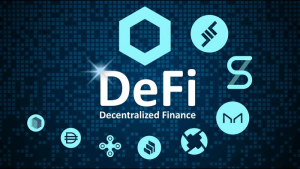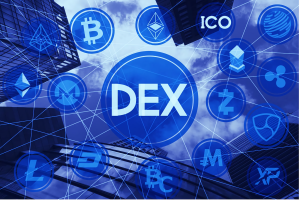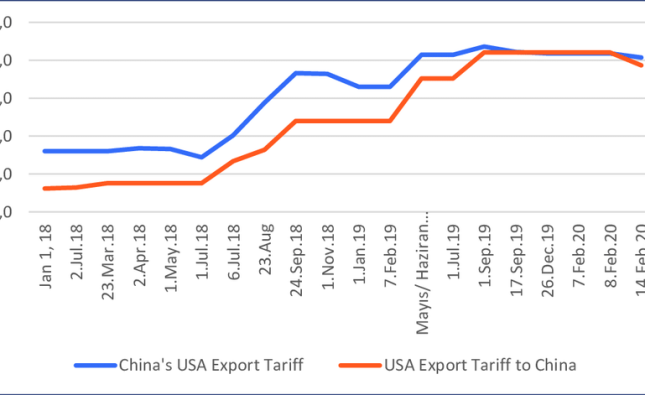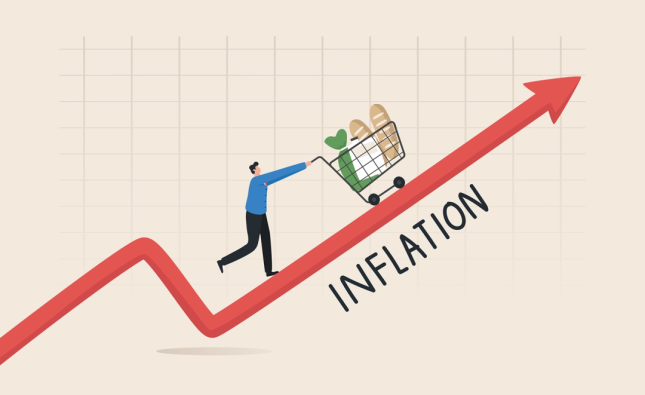
Introduction
Decentralized finance, or DeFi, lets people trade, lend, and earn interest without banks. At the heart of DeFi are decentralized exchanges, or DEX. These platforms use smart contracts to match buyers and sellers. In 2025, DEX volume rivals that of big centralized exchanges. But with great opportunity comes real risk. New traders can lose funds to bad smart contracts, impermanent loss, or high fees. This guide explains what DeFi and DEX are, describes top protocols, and shares tips to trade safely. You will learn how to pick the right exchange, manage risks, and use tools to track your positions. By the end, you’ll feel confident navigating DeFi’s fast-paced world.
What Is DeFi and DEX?

DeFi stands for decentralized finance. It uses blockchain networks like Ethereum and Binance Smart Chain to recreate financial services without middlemen. Users connect digital wallets to protocols and control their assets at all times.
Definition of DeFi
DeFi protocols let you lend tokens for interest, borrow against collateral, and trade without a central party. Smart contracts—self-executing programs on the blockchain—enforce rules. This automation reduces costs but also shifts all risk to code.
The Role of DEX in DeFi
A decentralized exchange, or DEX, lets you swap tokens peer-to-peer. Instead of order books, most DEX use automated market makers (AMM). You trade against pools of liquidity provided by other users. Prices adjust by a formula, not by matching buyers and sellers. DEX give access to any token that meets listing requirements. You stay in control of your keys. But you also bear all the risks of smart contracts and market volatility.
Key DeFi Protocols and Their DEX

Several major protocols power today’s DEX landscape. Each has its own features, chains, and user base.
Uniswap
Uniswap launched the AMM model on Ethereum. Liquidity providers deposit token pairs like ETH/USDC. Traders swap tokens and pay a 0.3 percent fee. Half of this fee goes to LPs. Uniswap V3 adds concentrated liquidity. LPs choose price ranges to earn higher fees with less capital.
Sushiswap
Sushiswap began as a Uniswap fork with added rewards. It pays extra SUSHI tokens to LPs. Beyond swaps, it offers lending, staking, and yield farming. Sushiswap operates on Ethereum, Polygon, and other chains.
Curve Finance
Curve focuses on stablecoin swaps with low slippage. It uses custom bonding curves fine-tuned for assets that trade near the same price. Fees are very low—often 0.04 percent—making it ideal for stablecoin pools and wrapped tokens.
PancakeSwap
PancakeSwap runs on Binance Smart Chain. It offers lower fees and faster transactions than Ethereum DEX. Beyond swaps, it has lotteries, NFT trading, and vaults for auto-compounding yields. CAKE token rewards LPs and voters in governance.
Balancer
Balancer lets LPs create pools with up to eight tokens in any ratio. Instead of fixed pairs, you can model your own index fund. Traders pay fees that flow to all pool tokens. Balancer also offers Smart Pools that adjust weights automatically.
Table: Comparison of Leading DEX Protocols
| DEX Protocol | Chain(s) | Fee (%) | Unique Feature | TVL (Approx.) |
|---|---|---|---|---|
| Uniswap V3 | Ethereum, Polygon | 0.05–1.0 | Concentrated liquidity pools | $6.5B |
| Sushiswap | Multi-chain | 0.3 | SUSHI rewards & yield farming | $2.8B |
| Curve Finance | Ethereum, Polygon, Arbitrum | 0.04 | Optimized stablecoin swaps | $10.2B |
| PancakeSwap | BSC, HECO | 0.25 | NFT marketplace, lotteries | $1.9B |
| Balancer | Ethereum, Polygon | 0.0001–1.0 | Multi-token pools & index funds | $1.2B |
How to Navigate DEX Safely

DeFi offers freedom but shifts all risk onto the user. Follow these steps to protect your funds.
Use a Secure Wallet
Choose a trusted wallet like MetaMask or Trust Wallet. Enable hardware wallet support (e.g. Ledger, Trezor) for large trades. Never share your seed phrase. Store it offline and in a safe place.
Verify Contract Addresses
Scam tokens mimic real projects. Always copy the official token contract from the protocol website or a reputable explorer like Etherscan. Paste the address into the DEX interface instead of relying on search.
Check Liquidity and Volume
Low liquidity can cause high slippage and price impact. Trade only in pools with deep liquidity. A pool with at least $100,000 in assets is safer for moderate trades. Higher volume means tighter spreads and lower risk of failed transactions.
Monitor Gas Fees
Ethereum gas fees spike during network congestion. Use layer-2 solutions like Arbitrum or Optimism to cut costs. Some DEX run on BSC, Polygon, or Avalanche for lower fees. Always estimate your total cost including gas before confirming a swap.
Understand Impermanent Loss
When you provide liquidity, price changes between tokens can reduce your value compared to just holding the tokens. Pools with similar-priced tokens (stablecoins) have very low impermanent loss. Use impermanent loss calculators to see potential impacts.
Best Practices for Trading on DEX

Beyond safety, use strategies to improve outcomes and save costs.
Set Limit Orders with Aggregators
Traditional DEX only allow market orders. Use aggregators like 1inch or Matcha. They source from many DEX to get the best rate and can offer limit orders. A limit order executes only at or above your target price, saving you from slippage.
Use Slippage Tolerance Wisely
Slippage tolerance tells the smart contract how much price movement you accept. A high tolerance (e.g. 1–2%) ensures execution but may get you a worse price. For volatile tokens, set slippage low (0.1–0.5%) and be ready for transaction failures.
Leverage Analytics Tools
Tools like DeBank, Dune Analytics, and Token Terminal show gas patterns, pool performance, and real-time TVL. Watch trends for sudden drops in liquidity or rising fees. Analytics dashboards also highlight newly listed pools and yield opportunities.
Manage Tax and Reporting
Every crypto trade can be a taxable event. Export your transaction history from wallets or DEX interfaces regularly. Use tax software like CoinTracker or Koinly to calculate gains and losses. This avoids surprises at filing time.
Tools and Resources for DEX Users
Having the right tools makes DeFi navigation smoother and safer.
Portfolio Trackers
Track all your DeFi positions in one app. Zapper and Zerion sync with your wallet and show balances, pool shares, and farming rewards. They alert you when performance drops or gas fees soar.
Gas Fee Trackers
Etherscan’s Gas Tracker and ETH Gas Station show current gas prices and recommended speeds. Use these to time transactions and avoid overpaying.
Security Audits and Monitoring
Check if a protocol’s smart contracts pass audits by firms like CertiK or SlowMist. Use DeFi safety aggregators like DeFi Safety or RugDoc to see risk ratings and audit status
Conclusion
Navigating DeFi protocols and decentralized exchanges takes care, research, and the right tools. Start with a secure wallet and verify token contracts. Trade in deep-liquidity pools to avoid slippage and impermanent loss. Use analytics dashboards and gas trackers to time trades and monitor pools. Follow best practices like limit orders, low slippage tolerance, and tax reporting. As DeFi grows in 2025, layer-2 networks, cross-chain bridges, and hybrid AMMs will reshape trading. Stay informed, manage risk, and you can tap into DeFi’s promise of open, permissionless finance.
Call-to-Action
Ready to dive into DeFi trading? Connect your wallet, pick a trusted DEX, and start small. Track your positions, stay safe, and grow with the decentralized finance revolution today!










